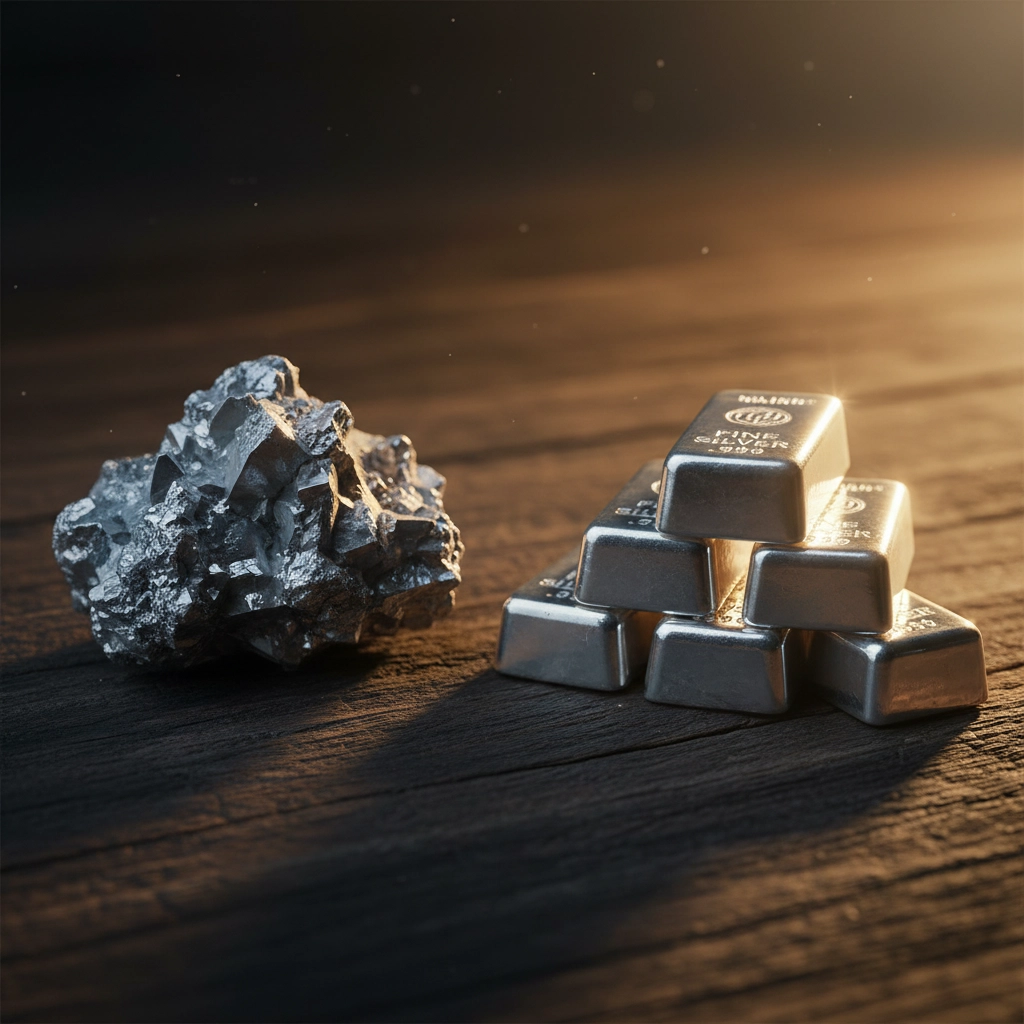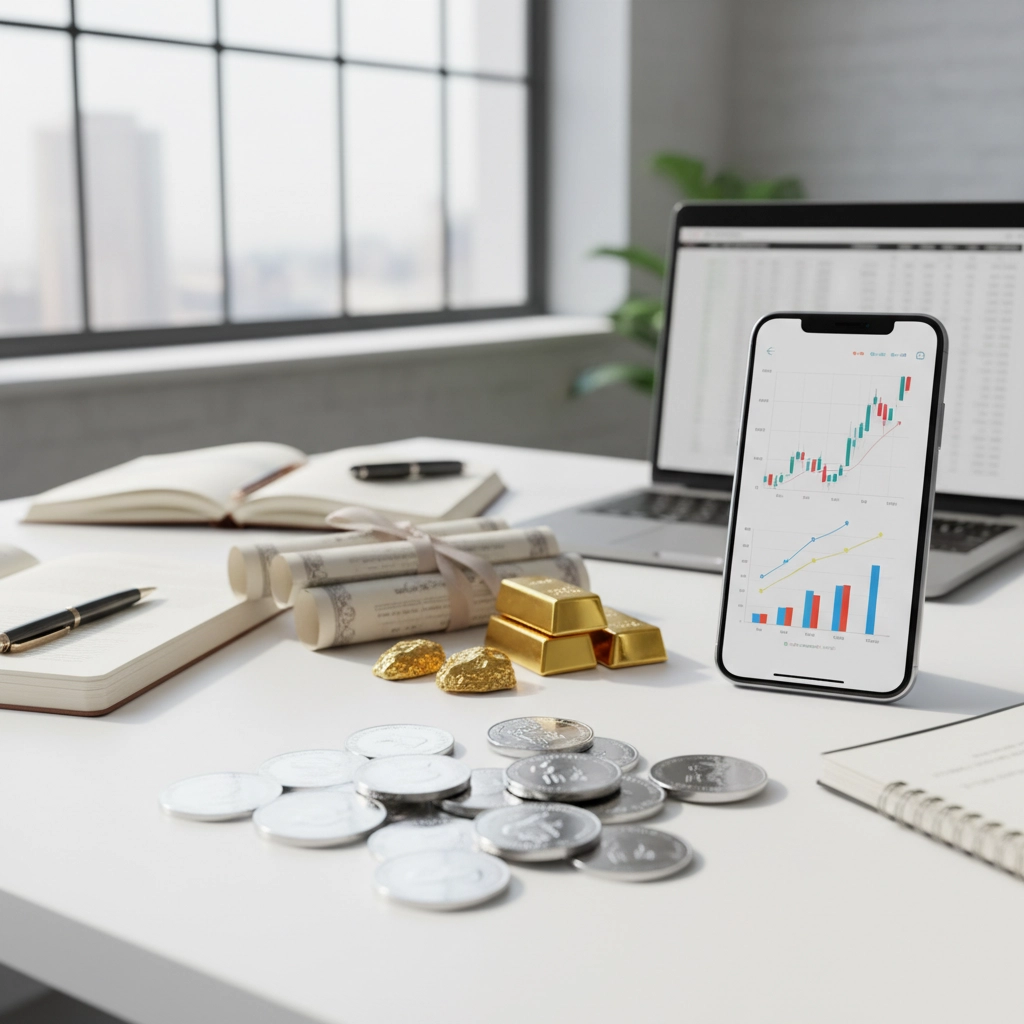Why Is the Price of Silver Up in 2025? (And What It Means for You)
- Travis Moore
- Sep 28
- 5 min read
Silver closed at $46.31 per ounce on September 26 2025, marking a 14-year high and a 44.70% year-over-year increase. This move reflects structural shifts in supply and demand rather than short-term speculation.
The rally is driven by three core forces: a persistent supply deficit, strong industrial demand from green technologies (solar, EVs, electronics), and global economic and geopolitical uncertainty that supports safe-haven buying. By understanding these drivers, you can align allocations, manage risk, and set realistic expectations for your portfolio.
The Supply Deficit Crisis
Silver faces a critical supply shortage that continues to worsen each year. The projected deficit for 2025 is expected to exceed 150 million ounces, marking the fifth consecutive year of shortfalls. This persistent imbalance between production and consumption has created fundamental upward pressure on prices.
Mining companies struggle with declining ore grades, meaning they must extract significantly more material to produce the same amount of silver. Additionally, the industry has seen a notable lack of new mining projects coming online, as companies have been reluctant to invest in expensive new operations during periods of price volatility.
Mexico plays an outsized role in global silver production, and any disruptions to their mining operations can significantly impact worldwide supply. The concentration of production in specific geographic regions adds another layer of supply risk that contributes to price volatility.

Industrial Demand Reaches New Heights
Industrial applications now account for more than 50% of global silver demand, fundamentally changing the market dynamics. This shift represents a departure from silver's traditional role as primarily an investment and jewelry metal.
Solar panel manufacturing has emerged as one of the largest industrial consumers of silver. Each solar panel requires approximately 20 grams of silver for optimal electrical conductivity, and the renewable energy boom has created unprecedented demand. Green technology initiatives worldwide continue to drive this consumption higher.
The electric vehicle revolution has also contributed significantly to silver demand. EV batteries, charging infrastructure, and electrical components all require substantial amounts of silver for proper functioning. As governments worldwide push for EV adoption, this demand source shows no signs of slowing.
Artificial intelligence and advanced electronics represent another growing consumption category. Data centers, smartphones, computers, and AI-related hardware all depend on silver's superior electrical conductivity properties. The digital transformation accelerating across industries ensures continued strong demand from this sector.
Economic Uncertainty and Safe-Haven Demand
Global economic instability has reinforced silver's appeal as a safe-haven asset. Geopolitical tensions, inflation concerns, and currency debasement fears have driven investors toward precious metals as portfolio protection.
Gold's remarkable rally to record highs above $3,700 per ounce has created a spillover effect for silver. The gold-to-silver ratio currently shows a significant gap, suggesting silver may have additional upside potential if historical relationships reassert themselves.
Interest rate expectations also play a crucial role in precious metals pricing. As investors anticipate potential changes in monetary policy, they often allocate capital to assets that can serve as inflation hedges and store of value during economic uncertainty.

What This Means for Individual Investors
The silver price surge presents both opportunities and considerations for your investment strategy. Silver's accessibility compared to gold makes it attractive for investors seeking precious metals exposure without the higher capital requirements of gold investment.
Portfolio diversification benefits become particularly relevant during periods of economic uncertainty. Adding a small allocation of precious metals can help reduce overall portfolio volatility and provide protection against currency debasement and inflation.
However, silver's smaller market size compared to gold means it typically experiences greater price volatility in both directions. This characteristic can amplify both gains and losses, making position sizing especially important for individual investors.
Consider dollar-cost averaging as an approach if you decide to add silver exposure. Rather than making large lump-sum investments, regular smaller purchases can help smooth out price volatility over time.
Implications for Consumers and Businesses
Higher silver prices inevitably translate to increased costs for silver-intensive products and industries. Electronics manufacturers face rising input costs that may eventually pass through to consumer prices.
Solar panel installation costs may increase as silver prices remain elevated, though the impact on renewable energy adoption will likely remain minimal given government subsidies and environmental priorities.
Jewelry prices will reflect higher silver costs, affecting both retailers and consumers in this market segment. Vintage and antique silver items may appreciate in value as new silver products become more expensive.

Future Price Considerations and Trends
Supply constraints are expected to persist in the near term, as new mining projects require years of development before production begins. Existing mines continue to face challenges with declining ore grades and higher extraction costs.
Industrial demand shows no signs of weakening, with green technology adoption accelerating globally. The transition to renewable energy and electric vehicles represents a multi-decade trend that should continue supporting silver consumption.
Investment demand remains sensitive to economic conditions and monetary policy. Continued economic uncertainty and inflation concerns could maintain or increase safe-haven demand for precious metals.
The gold-to-silver ratio provides important context for relative value. Historically, when gold outperforms significantly, silver often experiences catch-up rallies that can be substantial given its smaller market size.
Practical Steps for Your Financial Strategy
Evaluate your current portfolio allocation and consider whether precious metals exposure aligns with your risk tolerance and investment objectives. A typical allocation ranges from 5-10% of investable assets for most portfolios.
Research different ways to gain silver exposure, including physical silver, exchange-traded funds, mining stocks, or silver streaming companies. Each approach has distinct risk and return characteristics that should match your investment preferences.
Stay informed about supply and demand fundamentals rather than focusing solely on short-term price movements. Understanding the underlying drivers can help you make better long-term investment decisions.
Consider the storage and insurance costs associated with physical silver ownership. These ongoing expenses can impact your total returns and should factor into your investment analysis.
Monitor economic indicators that typically influence precious metals prices, including inflation data, currency movements, and interest rate expectations. These factors often provide early signals for potential price direction changes.
At $46.31 per ounce as of late September 2025—up 44.70% from one year ago—the silver market reflects fundamental shifts in both supply and demand that extend beyond typical cyclical patterns. Industrial applications continue expanding while supply constraints persist, creating a structural backdrop that supports higher prices. For investors and consumers alike, understanding these dynamics can inform better financial decisions in an increasingly complex economic environment.
This rally represents more than speculative activity; at $46.31 per ounce (+44.70% YoY) it reflects real-world supply and demand imbalances that are likely to persist. Whether you choose to participate in this trend or simply understand its implications for your daily life, staying informed about these market developments can help you navigate the evolving precious metals landscape more effectively.
Comments